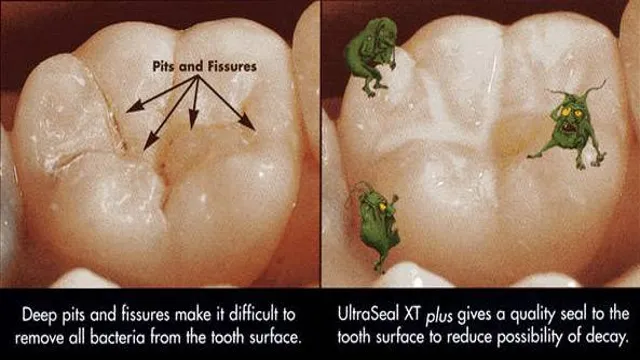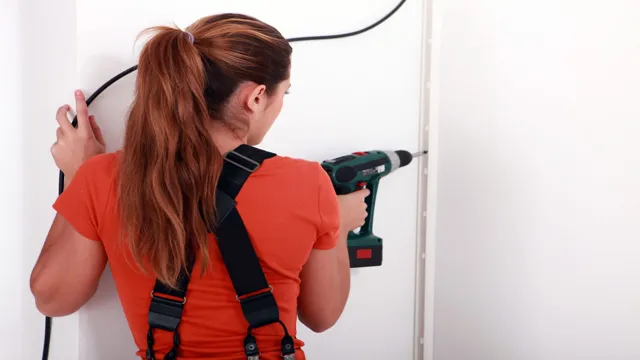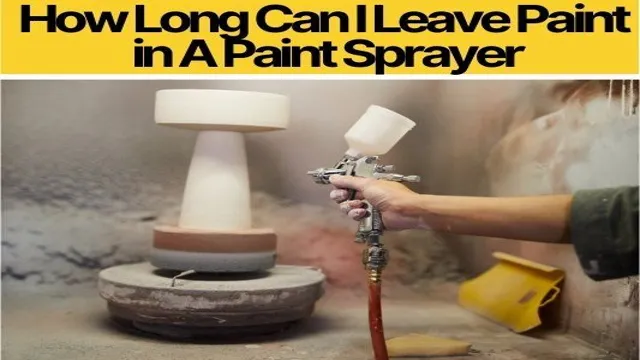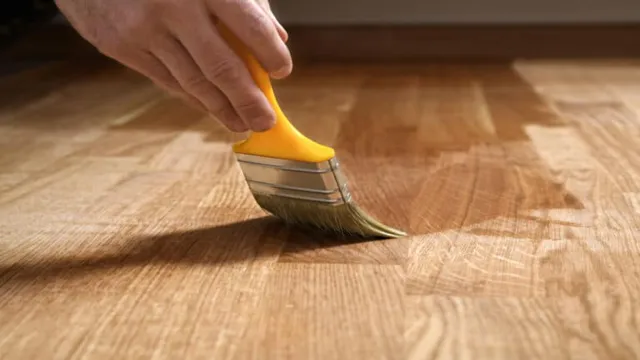How to Make OSB Look Like Drywall: Tips and Tricks for a Seamless Finish
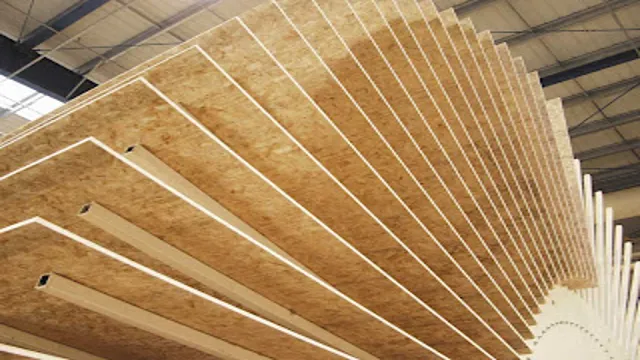
Have you ever considered using OSB as an alternative material for your walls? While it’s not the most aesthetically pleasing option, there are ways to make it look like traditional drywall without breaking the bank. OSB, or oriented strand board, is a type of engineered wood made from compressed wood strands. It’s cheaper, stronger, and more weather-resistant than traditional plywood, making it a popular option for construction.
However, its rough texture and appearance can be a turn-off for some homeowners. Luckily, there are several techniques you can use to make OSB look like smooth, seamless drywall. In this blog post, we’ll walk you through the steps of achieving a more polished finish with OSB.
Materials Needed
If you’re tired of the traditional look of OSB (oriented strand board) in your home and would like to switch it up, don’t worry – it’s easy to make it look like drywall. All you need are a few basic materials: drywall compound, sandpaper, primer, and paint. You’ll start by applying drywall compound to the OSB, filling in any gaps and smoothing the surface.
After the compound has dried, you’ll need to sand it down until it’s even. Then, apply primer to the entire surface to ensure the paint adheres well. Once the primer has dried, you can finally paint your newly created drywall.
And just like that, you have a new, fresh look for your space. Don’t forget to use a good quality paint and be sure to let it dry completely before reassembling any furniture or decor. With a little bit of effort, you’ll have a transformed room in no time.
– OSB board
When it comes to building a sturdy and reliable structure, OSB board is a must-have material. OSB, which stands for oriented strand board, is made from strands of wood particles that are glued together under high pressure. This construction process results in a dense and strong board that can withstand heavy weight and constant wear and tear.
The board is commonly available in various thicknesses and sizes, making it a versatile material that can be used for different projects both indoors and outdoors. Whether you’re building a shed, a house, or a furniture piece, OSB board is an affordable and durable option that can provide long-lasting support and stability. When combined with other materials, such as insulation and moisture barriers, OSB board can also help to improve the overall energy efficiency and weather resistance of a structure.
So, if you’re planning a building project, make sure to include OSB board on your list of materials needed for a strong and dependable structure.

– Joint compound
Joint compound is a crucial material when it comes to any drywall project. It acts as a filler and provides a smooth surface to work on. Proper application of joint compound can give a professional finish to your walls.
You will need joint compound when installing new drywall, repairing cracks, or patching holes. Joint compound is readily available in hardware stores and typically comes in a powder form that you mix with water. It is essential to follow the instructions on the package for the right mixing ratio.
Typically, joint compound requires several coats, and each coat has to dry before adding the next. Remember to sand between each coat to ensure a smooth and seamless finish. The best part about joint compound is that it is easy to use, even if you’re not a seasoned DIYer.
With a little practice and patience, you can master its application and achieve professional-looking results.
– Sandpaper
When it comes to tackling a DIY project at home, having the right materials is key to achieving a successful outcome. If you’re planning to work with wood or any other type of material that requires some sanding, then you’ll definitely need sandpaper as one of your essential tools. Sandpaper is designed to smooth out rough surfaces, remove old paint or varnish, and prepare surfaces for painting or staining.
It comes in a variety of grits, ranging from coarse to fine, to suit different types of surfaces and finishes. The coarse grits are ideal for removing heavy layers of material, while the finer grits are better for finishing and smoothing out surfaces. Keep in mind that using the right grit for the job at hand is crucial, as using a grit that’s too coarse can damage the surface, and one that’s too fine may not be effective.
So make sure to stock up on sandpaper in different grits to get the job done right.
– Drywall tape
When it comes to drywall installation, there are several materials you’ll need to get the job done right. One essential material is drywall tape, which is used to cover the seams between sheets of drywall. This tape helps to reinforce the joints and prevent cracks from forming over time.
You’ll want to choose a tape that’s appropriate for your specific project, such as mesh tape for larger gaps or paper tape for smaller ones. Other materials you’ll need include joint compound, drywall screws, sandpaper, and of course, the drywall sheets themselves. By having all of the materials at the ready, you’ll be able to tackle your drywall installation in a timely and efficient manner.
Preparing the OSB
Are you tired of the unsightly appearance of your OSB walls? Thankfully, there is a simple solution to make your walls look like drywall. The first step is to sand the surface of the OSB to remove any rough spots and create a smoother surface for painting. Next, apply a coat of primer to the wall to create a base layer and help the paint adhere better.
Once the primer is dry, apply a layer of joint compound to the wall, using a trowel to spread it evenly across the surface. Let the compound dry completely before sanding it down to create a smooth surface. Finally, apply a coat of paint to the wall, and your OSB wall will now look like a traditional drywall surface.
By following these steps, you can easily transform the appearance of your OSB walls and create a more polished and professional look in your space.
– Sand the surface of the OSB board with fine-grit sandpaper
When it comes to woodworking, sanding is one of the most important steps. Preparing your OSB board before starting your project is crucial for achieving the desired finish. Sanding the surface of the OSB board with fine-grit sandpaper is an essential part of the preparation process.
It smooths out any rough spots, removes any leftover glue or debris, and allows the surface to take on a layer of paint or stain evenly. It also helps the adhesive or finish to adhere better, preventing any bubbles or peeling in the future. It’s like priming a wall before painting to ensure the best finish possible.
Sanding your OSB board will give it a professional look that’s sure to impress. So, before you begin your project, don’t forget to sand your OSB board well. Your final product will thank you for it.
– Apply drywall tape over the seams of the OSB board
If you’re working on a project that requires OSB, it’s important to prepare it properly before moving on to the next step. Applying drywall tape over the seams of the OSB board is a key part of this preparation process. The purpose of drywall tape is to reinforce the seams in the OSB and prevent cracking or shifting later on.
To apply the tape, start by cleaning the surface of the OSB to remove any debris or dust. Next, apply a thin layer of joint compound to the seam, then lay the tape over it, pressing it firmly into place. Smooth out any bumps or wrinkles in the tape, then apply a second layer of joint compound over the top.
Once this is dry, you can sand it down and proceed with whatever comes next in your project. By taking the time to properly prepare your OSB, you’ll create a more stable and durable overall structure.
– Cover the OSB board with joint compound using a trowel or putty knife
To prepare your OSB boards for finishing, start by cleaning any dust or debris from the surface. Then, apply a coat of joint compound using a trowel or putty knife. The joint compound will fill any gaps or holes in the surface, creating a smooth and even finish.
It’s important to wait for the joint compound to dry completely before sanding it down to eliminate any bumps or rough spots. This step will help ensure that your final finish looks clean and professional. Remember to wear a mask while sanding to avoid inhaling dust particles.
Overall, taking the time to properly prepare your OSB boards will make a significant difference in the quality of your finished product.
Finishing Touches
If you’re looking for a cost-effective way to finish the walls of your home, using OSB instead of drywall can be an excellent choice. However, the rustic appearance of OSB isn’t always the preferred style in modern homes. But don’t worry, with a little bit of preparation and the right techniques, you can make OSB look just like traditional drywall! The first step is to ensure a smooth, even surface.
Sand down any rough edges or knots, and fill in any gaps or dents with wood filler. Then, apply a primer to the surface to provide a neutral base layer. Finally, apply multiple coats of paint to achieve a flawless finish.
With these steps, your OSB walls will look as good as new and provide the perfect canvas for any interior design style!
– Allow the joint compound to dry completely
When it comes to finishing touches for your drywall installation project, allowing the joint compound to dry completely is crucial. Rushing this step can result in a less-than-perfect finish and even lead to future problems. Joint compound requires time to cure properly, and depending on conditions like humidity and temperature, it can take anywhere from a few hours to several days to dry.
It’s essential to err on the side of caution and wait until the compound is fully dry before attempting to sand or paint it. Trying to speed up the process by using fans or heaters can backfire and cause cracking, so patience is key. Taking the time to let the joint compound dry thoroughly will ensure a smooth and professional-looking finish for your drywall project.
– Sand the surface of the joint compound to a smooth finish
After applying joint compound to your walls, it’s important to give it a smooth finish. This is where sanding comes in. Sanding the surface of the joint compound not only gives it a polished appearance but also helps to eliminate any imperfections and bumps that may be present.
Before sanding, ensure that the surface is completely dry so that you can remove any dust or debris using a dry cloth. You can then use a 120-grit sandpaper to sand the surface until it is smooth but avoid over-sanding as it can remove too much of the compound and create divots or holes. Once the surface is smooth, wipe it clean with a damp cloth, and allow it to dry before applying any paint or wallpaper to the surface.
Remember, proper sanding is essential to create a professional-looking finish that will enhance the beauty of your walls.
– Apply a second coat of joint compound and repeat the sanding process
Once you’ve applied the initial coat of joint compound and allowed it to dry, it’s time to move on to the next step in achieving a perfect finish. Applying a second coat of joint compound is necessary for filling in any remaining gaps or imperfections in the surface. Use a clean trowel to smooth the joint compound over the area, making sure to spread it evenly.
Once it has dried, sand it down again to ensure a smooth surface. This process may need to be repeated several times until you achieve the desired effect. Remember to use a light hand when sanding – too much pressure can damage the surface.
With perseverance and attention to detail, your finish will be perfectly smooth and ready for painting or wallpapering.
– Paint the surface of the treated OSB board with a high-quality primer and paint to match drywall
If you’re looking to give your OSB board a finished and polished look, then it’s time to break out the primer and paint. A high-quality primer and paint will not only enhance the appearance of your OSB board but also protect it against wear and tear. Before you get started, make sure to clean the board thoroughly with a damp cloth and allow it to dry completely.
Once your board is clean and dry, use a high-quality primer to create an even surface and help your paint adhere better. Be sure to choose a primer that’s designed for use on OSB, as some types may not adhere well or may cause the board to swell. After you’ve applied the primer, it’s time to choose your paint color.
Opt for a paint specifically formulated for use on drywall as this will provide the best finish. Once you’ve painted your board, allow it to dry thoroughly before installing it. With a little time and effort, your OSB board will look just as polished as any drywall surface.
Conclusion
In conclusion, to make OSB look like drywall, one must exercise the art of deception. With a few helpful tips and tricks, such as filling in gaps with joint compound and sanding down rough edges, you can transform your cheap and durable OSB into a sleek and polished drywall look-alike. It’s all about masking those unsightly imperfections and creating the illusion of a seamless finish.
So, embrace your inner magician and get ready to perform some DIY sorcery on your next project!”
FAQs
What is OSB?
OSB stands for oriented strand board. It is a type of engineered wood product that is made up of compressed wood strands, similar to particle board.
Can OSB be used as a substitute for drywall?
While OSB can be used as a substitute for drywall, it is not recommended as it does not have the same fire-resistant and sound-insulating properties as drywall.
How can I make OSB look like drywall?
One option is to apply a coat of joint compound to the surface of the OSB, sand it smooth, and then paint it with a primer and finish coat to achieve a similar appearance to drywall.
What are the benefits of using OSB instead of drywall?
OSB is generally less expensive than drywall and is more resistant to moisture, making it a good choice for areas such as basements or garages. Additionally, it can be used as a structural component in framing.
Can OSB be used for ceiling applications?
Yes, OSB can be used for ceiling applications. However, it is important to ensure that the appropriate thickness and grade of OSB is used to support the weight of the ceiling materials.
How should OSB be installed to ensure a durable and long-lasting finish?
Proper installation of OSB involves using the correct fasteners and ensuring that the edges are adequately supported. It is also important to protect the OSB from moisture during the installation process.
Is OSB considered environmentally friendly?
OSB is made from a renewable resource, wood, and is typically manufactured using eco-friendly practices. Additionally, it can often be recycled at the end of its useful life.


